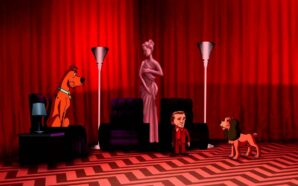I can only imagine what a baffling experience it would be to watch the two X-Files movies without having seen the show. The X-Files: I Want to Believe would be the weirdest sequel ever, and even with the show it almost is. Mulder and Scully are in radically different places in their lives, no longer part of the FBI, and gone is the alien conspiracy story, replaced by a character drama with an intense serial killer plot. The X-Files can offer different tones and types of stories, and what the second film provides is very different to the first and what people were expecting from the next big screen outing six years after the show ended. Unlike most it seems, I Want to Believe offers what I want from an X-Files film and I find it to be a much underrated instalment in the franchise.
I prefer I Want to Believe to the first film, Fight the Future, because I’m far more engaged by standalone ‘monster-of-the-week’ stories than the mythology, especially after the ninth season. Yet, given the circumstances of the film’s release, I don’t begrudge anyone for feeling disappointed by it. It’s all about expectations. The series ended without closure for the mythology storyline, stating that a huge alien invasion was imminent and Mulder and Scully had to stop it. I Want to Believe doesn’t reference that at all. Personally, that’s a positive for me given my investment in that narrative, or lack thereof, but understand many others wanted a continuation of that story.
The alien mythology is the spectre at the feast, lingering over the film as a dark shadow, like a giant UFO hovering above yet one that nobody bothers to reference. It can be hard to get invested in any element of the film when, based on the time frame given in the series finale, the world is only four years away from, you know, ending. It’s hard to see the ending post-credits scene of Mulder and Scully enjoying a vacation as happy when colonisation is on the horizon. Writer/director Chris Carter clearly intends to forget that story is even happening and so too do the audience if they want to enjoy the film. For me, that’s an easy thing to do.
Yet I genuinely feel that I Want to Believe is more successful as a big screen movie version of The X-Files than the first film. Fight the Future felt like the show, yes, but too much so. It was basically just a two-parter shown on the big screen rather than a movie. I love the feel of I Want to Believe. It’s not so far removed from the series that it loses all essence of the show but it also looks and feels significantly different, as a film should. It’s a unique X-Files flavour but crucially is still The X-Files. It’s a film with Scandi-noir vibes. A small scale serial killer thriller. The setting also makes it feel different. The film thankfully leaves LA and returns to the series’ roots in Canada, although the heavy snow gives it new texture and atmosphere.
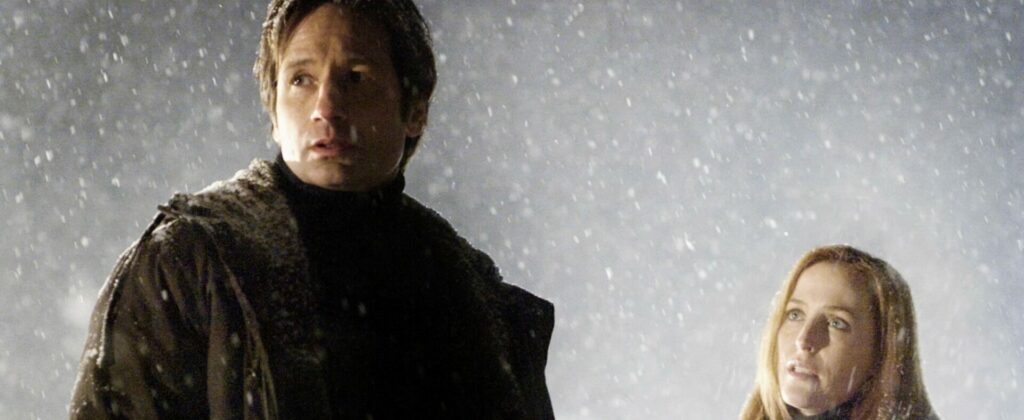
The film is about Mulder and Scully having been away from their job for a long time and whether they want that darkness back in their life, so the film is right to challenge them by being dark and nasty. And it really is. It’s unsettling. It’s not a sci-fi film but a disturbing horror story, with much of it feeling grounded. The FBI reach out to Mulder and Scully and ask for their help on a new case. An agent has gone missing, taken to be used for a bizarre experimental body transplant, deep in the cold wilderness, and a paedophile priest claims to have psychic visions that could help save her.
The show’s creator and showrunner, Chris Carter, takes on the directing duties himself, his feature debut, and he’s not as strong a director as Rob Bowman was for the first film. Some techniques soon become repetitive like introducing Scully, Mulder, and Skinner all with the same ‘reveal’ shot, the camera starting at waist level and then spinning and rising to show their face. But Carter is competent enough and aided by some excellent cinematography and editing. The night scenes look fantastic; dark and moody with cool lighting. Some scenes (maybe it’s just the snowy setting) reminded me of Let the Right One In and I thought for sure that would have been a visual inspiration but it turns out that film was released the same year.
Almost immediately, the film undoes the on-the-run ending of the television show. Scully is a doctor at a Christian hospital and Mulder is doing the bare minimum of hiding in an isolated house, complete with terrible fake beard. They are soon shepherded to the FBI where they are forgiven for escaping a death sentence with no repercussions and straight back to it. Curiously, the x-files themselves are closed down in both feature films. The film could introduce Skinner here, it would feel more natural, but instead he’s saved for the third act, where he does little. I’d prefer him to be involved from much earlier. And it’s worth pointing out the very odd moment where Mulder and Scully share a look when they see a portrait of then-President George Bush on the wall, accompanied by the main X-Files theme. It’s played like a joke but I have no idea what it’s supposed to signify or why it’s funny.
The film is a stripped-back character study and hinges on Mulder and Scully far more than it does the plot. Thankfully, David Duchovny and Gillian Anderson’s chemistry is great. The writing, however, fluctuates in quality. The relationship between them feels undefined for too long. I didn’t realise until we cut to the two of them in bed together (a great scene) that they were still in a relationship and living together. Then they break up and I don’t believe the extent to which they have conflict, not after everything they’ve gone through. I get that Scully doesn’t want to invite darkness back into their lives so maybe it would work better if Mulder felt more actively engaged by the case, more manic about it, but Duchovny’s laid back approach doesn’t sell his interest as much as it needs to.
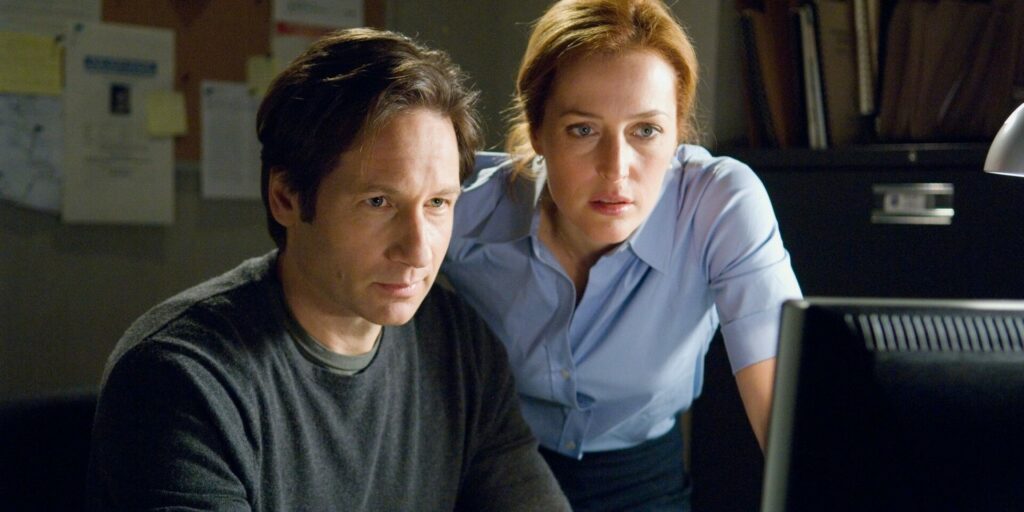
‘I Want to Believe’ is at once a brilliant and terrible subtitle for the movie. Terrible because it immediately makes people think of Mulder’s poster and aliens, adding to the disappointment when the film isn’t about that, but brilliant because it’s a film about belief and faith. It’s about Mulder’s belief in the supernatural, trusting that Father Joe is a psychic, but more so Scully’s belief in God. Carter’s overt religious ideas were weak in the final seasons of the show but are handled much better here. Scully’s crisis of faith, about why a young boy is suffering from a seemingly incurable disease, about the struggle to keep believing, about Father Joe’s past, is certainly a bit more relatable than an extraterrestrial Christ child. And it works because the film doesn’t try to answer the questions, it simply explores them in relation to these characters.
There are still some unsubtle elements within the belief theme. The ill boy in Scully’s religious hospital is called Christian, for example. But Scully’s crisis of faith works much better than Mulder’s. She relates Christian to her son William, dealing with her maternal feelings. It also offers a realistic reason for why she returns to her sceptical outlook. She wants to disbelieve Joe’s powers because of his past, his betrayal of her faith, so it feels natural for her to push back at him in this scenario. Mulder however, despite finding closure in an episode literally called Closure, is apparently still reckoning with his sister’s disappearance, with the kidnapped women being proxies for her, and at this point in his story I just don’t buy it. That well ran dry seasons ago.
I have no defence for the film’s most mocked moment. Scully googles a medical procedure and then performs it the very same day. It’s terrible. I get that it’s all for the audience’s benefit, a bit of visual exposition, but it’s so stupid. She googles stem cells, highlights the results, prints out the results, puts them in a folder, writes “stem cell therapy” on a piece of paper, and then underlines it so we know she means business. That’s all the training and research she needs to perform brain surgery later that day. It also annoys me that the hospital, the priest that works there, and the boy’s parents all object to the treatment because they see it as prolonging Christian’s suffering. It’s always discussed in terms of pain when surely the most interesting and thematic argument would be the religious implications of stem cell therapy, with Scully ‘playing God.’
I Want to Believe has a lot of good ideas and themes which almost connect to each other. The pieces are all there but not all of them quite come together. The killer plot, Father Joe, and Scully’s patient all exist in the same thematic realm but miss that final link. When the film tries to connect Scully’s care of the boy with Joe’s past with altar boys it becomes uncomfortable. They all need faith in something greater, and I like the light and dark parallels of character’s not wanting to give up on someone dying: Scully with Christian and the killer with his husband dying of cancer and going to extreme, terrible methods to keep him alive. The idea of “don’t give up” is a little simplistic, though. Joe says that to Scully in a seemingly prophetic moment that she reads into and bases her entire actions on. I don’t feel those words are strong or specific enough. Anyone might say that to someone investigating a kidnapping.
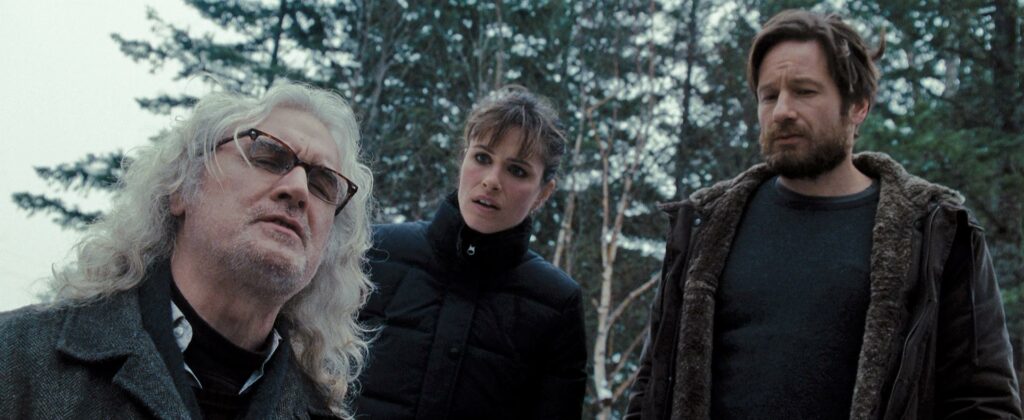
I wish the film had spent more time with Father Joe. Billy Connolly is fine in the role, playing very much against type, but he’s in the film much less than I remember. Joe plays the part he needs to in the story but little else. There’s little room for personality or character. Who is he and what is his life like? I wanted a day-in-the-life sequence, showing his regular routine in this commune for sex offenders, seeing how he acts with people who aren’t suspicious FBI types. The movie is stuck in a catch-22 with Joe: it can’t show too much in order to keep his motives a mystery but that means we get so little I think barely anything about him at all.
Irritating some but enjoyed by me, I Want to Believe is barely supernatural. Its status as an x-file is questionable. Father Joe could be a psychic, and by the logic of the film probably is, but he could also be an accomplice to the crimes. Molestation is a very strange reason for the psychic connection between Joe and his former victim, but God seems to be giving him a way to redeem himself and, in a way, stop the legacy of his crimes. The head/body transplant is just a Karl Pilkington musing away from real science. The two-headed dogs can exist in real life, yet don’t live very long. Although I will agree that perhaps the final confrontation could have been a bit grander. Scully and Skinner barging into a lab with an alive dismembered head doesn’t scream finale; maybe if he was lumbering around on someone else’s body like Frankenstein’s Monster and there was a brief fight.
There are readings of the film that state that it is homophobic or transphobic and I don’t disrespect that opinion but I don’t agree there’s enough ammunition to make such claims. The bad guys are a gay couple but I don’t think the film is saying they are bad because they are gay, rather the film displays genuine emotional love between them to parallel Scully’s similar life-saving procedures on Christian. But I do think there should be more distance between the gay characters and Joe’s paedophilia so as not to imply causation or any link, a dangerous trope. I also think the body swap is sufficiently coated in sci-fi to not read as any trans parallel. Sticking a man’s head on a woman’s body is disturbing because they kidnap, imprison, and brutally murder the women by cutting off their heads and chopping up the body. And the writers chose women as ‘donors’ to show the extreme lengths they are willing to undergo to prolong life, and a man’s head on another man’s body doesn’t look so different.
After perhaps a slightly lame confrontation with the killer, I really like the movie’s ending. The final scene between Mulder and Scully, reconciling but acknowledging what has happened between them, is great and I love the final scene. Scully continues to perform the experimental treatment on the boy but we don’t find out whether he survives or not. In keeping with the theme of the film, we have to have faith, we have to believe. And for a while this was the beat the entire franchise ended on.
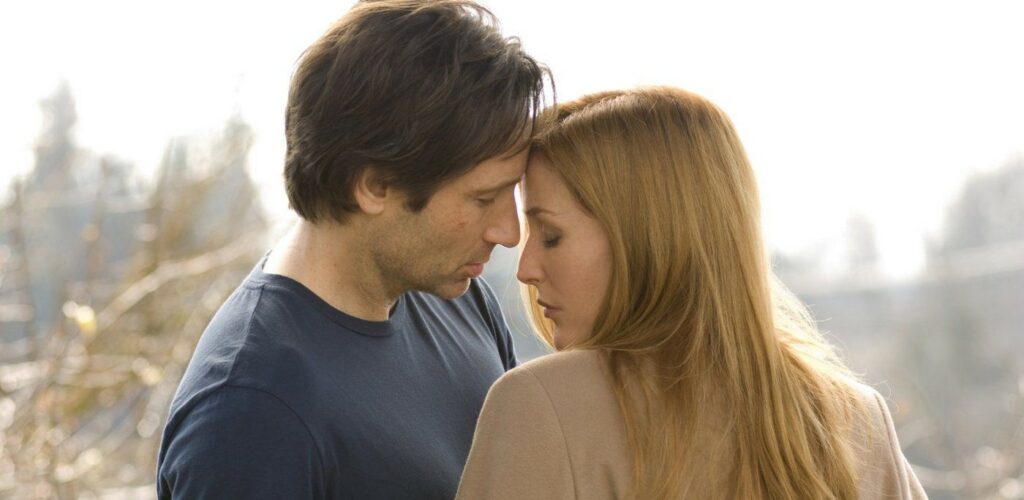
I Want to Believe was released in 2008 alongside The Dark Knight and Mamma Mia, the original Barbenheimer. The film managed to double its budget but wasn’t a huge success and a third film became a pipe dream, the alien invasion forever threatening but never coming. Then, in 2016, The X-Files returned to television. I wish I had seen I Want to Believe in the cinema but I only got into the show later that year (and was too young), but perhaps part of why I always liked the movie was because it was the most recent entry in the series. The show felt old but the film was still quite new and made me feel like I was a fan of something that was still ongoing.
There was so much secrecy around the production of The X-Files: I Want to Believe. The script was under lockdown, the villains and their plot kept secret, and production photos were faked and leaked to throw people off the scent, such as an image of Chris Carter holding a werewolf head. All this secrecy probably didn’t help the disappointment. To fully enjoy it, I Want to Believe is a film you need to prepare people for what to expect. This isn’t the next major step in the mythology or the conclusion to the show that the series finale failed to be. It’s a completely different type of X-Files story, and it just so happens to be exactly the type of X-Files story I most enjoy. It’s a dark, atmospheric little thriller, more interested in its characters than its plot, just like I am. Snuggled between the weak ninth season of the show and the poor revival lies perhaps the most underrated instalment of the entire X-Files canon.








